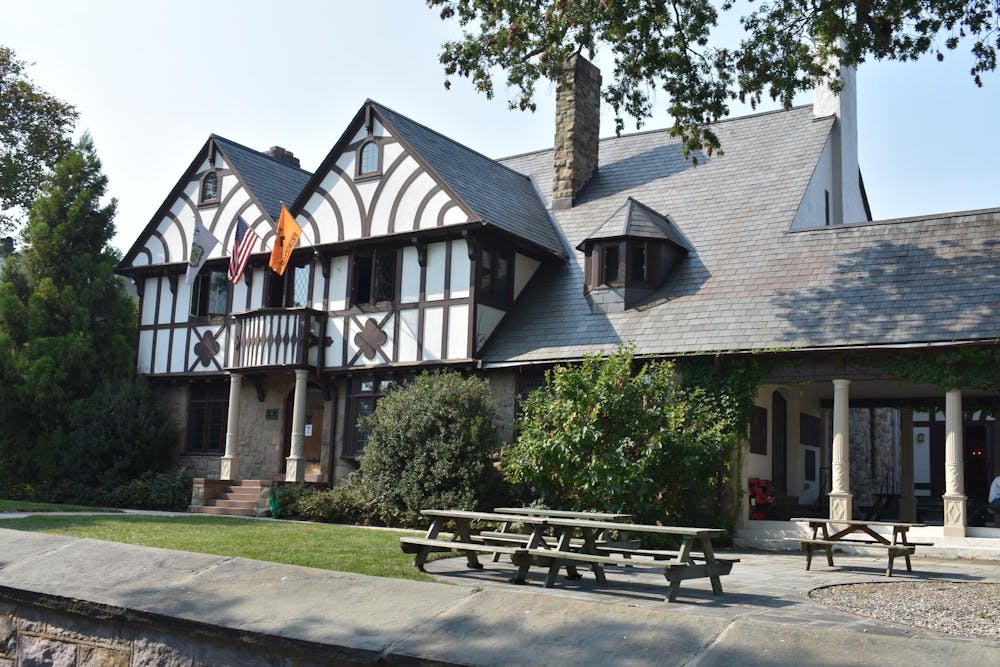Street Week 2025 has concluded, with all of the 1,263 students who chose to pursue an eating club given a place according to a press release from the Interclub Council (ICC). 83 percent of the Class of 2027 participated in Street Week, up from 80 percent of the Class of 2026 last year. Tiger Inn (TI) remains the most selective club, Cap and Gown Club has reclaimed the distinction of being the most bickered club, and Tower has seen a near 17 percentage point decrease in acceptance rate from last year, from 59 to 42 percent.
Street Week refers to a week of conversations and social events during which many sophomores and juniors explore the various eating clubs located on Prospect Avenue. This year’s Street Week was held from Feb. 2 to Feb. 7.
In a press release issued to The Daily Princetonian, President of the ICC Vincent Jiang ’25 shared that 119 juniors and 1,144 sophomores were placed into the 11 eating clubs.
Last year, the ICC failed to place a small number of students — less than one percent — into an eating club due to the demand from the unprecedentedly-large class of 2026. This year, the ICC was able to place all students who took part in Street Week activities, as all registered students were required to rank all five sign-in clubs, instead of just two, which was the practice in years prior.
“The Street as a whole has successfully adapted to the larger size of the Class of 2026 and beyond, reflected in our increased numbers with many clubs reaching physical capacity,” Jiang wrote.
The ‘Prince’ contacted officer teams at every eating club, as well as the ICC. Jiang told the ‘Prince’ that “the eating clubs have discussed and we have decided that we are going to send out one joint ICC press release.”
There are three systems for admittance into the eating clubs. Cloister Inn, Colonial Club, Quadrangle Club, and Terrace Club, all use the “sign-in” system, where students are free to sign up for the clubs, and the students are randomly selected to join a given club based on the space available.
An additional feature of the sign-in option is the group sign-in, which allows groups of sophomores and juniors to sign-in to the same club with their friends. The ICC shared in their press release that they saw “32 students (across 10 groups) participate in the ICC’s group sign-in feature.” This was an increase from only 25 students from five groups last year.
Cannon Dial Elm Club, Cap and Gown, Cottage Club, Ivy Club, Tower, and Tiger Inn all use the “bicker” system, where prospective members engage in conversations and games with current members. Clubs then hold member or Bicker committee discussions that determine which students each club accepts. Each student is able to bicker up to two clubs.
Charter Club operates on a third, unique system of acceptance. It is the only club that uses a selective sign-in process, awarding points to prospective members for demonstrating interest in the club, including by attending events before winter break and during Street Week.
Following criticism for its selective sign-in process during last year’s Street Week, when people who attended 12 out of 14 events were not accepted to the club, then-Charter President Anna Johns ’25 announced in November that there would be changes to make the process more accommodating. Charter would hold 14 point-earning opportunities again in 2025. However, this year, the eating club capped the number of points an individual can receive at nine.

“We hope that what this will do is reduce some pressure, you don’t have to go to all 14 events, because we stop counting at nine,” Johns said at a panel held by the ICC in November.
Charter’s process is non-evaluative, so if more students get nine points and rank Charter first than there is space in the club, membership will be selected via a lottery.
Registration for Street Week lasted from the afternoon of Jan. 26 to Feb. 1. Students had until Thursday, Feb. 6 at 8 p.m. to rank their club preferences, before decisions were released the next day at 10 a.m. The ranking window for the eating clubs opened on Feb. 4 at 8 p.m. and closed on Feb. 6 at 8 p.m. At 10 a.m. on Feb. 7, students received notification of their acceptance to an eating club. Bicker discussions generally start on Tuesday or Wednesday night and can last into the wee hours of Friday morning.
In the press release, Jiang stated that “735 students utilize[d] the ICC’s double-bicker.” Of the total 1,795 bickerees, which included double-bickerees twice, 325 students single-bickered, meaning a total of 1,060 students bickered this year. 203 signed into clubs without bickering.
624 of the 1,060 students were offered spots in Bicker clubs — a five person decrease in accepted Bicker students from last year.
Breakdown of club acceptance rates
TI was the most selective club, accepting 96 of the 395 bickerees for a 24.3 percent acceptance rate, compared with last year’s 25.7 percent acceptance rate. 90 of these accepted students were sophomores, while the remaining 6 were juniors. TI accepted the same number of students this year as it did last year.
Cannon Dial Elm had the highest acceptance rate of bicker clubs this year, offering admittance to 118 of its 196 bickerees for a 60 percent acceptance rate. This was a 1.1 point increase in acceptance from last year. Cannon admitted 101 members last year.
Tower let in the most members among the Bicker clubs, accepting 143 of the 337 bickerees. This year, Tower saw an increase in bickerees, compared with 278 last year.
While 337 signed up to bicker Tower, only 302 went to Bicker sessions and were thus discussed. Tower had an acceptance rate of 42.4 percent, a decrease of 17 percentage points from last year.
Cap and Gown was the most bickered club with 397 bickerees, reclaiming the title from TI, which was most-bickered last year.. The club accepted an equal number of male and female bickerees, welcoming 100 new members total. The 25 percent acceptance rate is a 2.6 point decrease from last year’s acceptance rate.
Head Audience Editor and Senior News Writer Justus Wilhoit ’26 is a member of the Cap and Gown Club and has recused himself from reporting on the club.
Ivy Club had a 30.4 percent acceptance rate, admitting 79 members out of 260 bickerees, a 3.6 point increase from last year. Last year, the club accepted 78 of its 291 bickerees, all of whom were sophomores.
Ivy has prided itself on accepting a small number of students to foster a close community. In 2016, former Ivy Bicker Chair Michael Moorin ’16 told the ‘Prince’ that “we believe Ivy’s small membership is core to its identity.”
Cottage Club welcomed 88 new members out of its 240 bickerees, a 36.7 percent acceptance rate relative to last year’s 33 percent.
Quadrangle Club accepted the most new members among the sign-in clubs, a distinction held by Terrace last year. Quadrangle Club welcomed 155 new members into the club, 133 of whom are sophomores, compared with 102 new members overall welcomed last year.
Cloister offered spots to 86 members, a decrease from last year when they offered spots to 103 members. Notably, almost 14 percent of Cloister’s new members were also offered spots last year.
Charter welcomed 100 members to the club, in line with the 110 accepted last year.
Terrace welcomed 131 members to the club, in line with 143 new members welcomed last year.
Colonial welcomed 120 members to the club, the same number welcomed to the club last year.
Looking ahead, students consider their options
82 percent of students who participated in Street Week were placed into their first or second choice club, an increase from 80 percent last year, according to the ICC. In the wake of Street Week, some students have begun to explore alternate options for their dining plans next year, such as joining a co-op, going independent, re-enrolling in the University dining hall plan, joining a sign-in club, or waiting to bicker again in the fall.
However, even getting a spot in a bicker eating club during Fall Bicker isn’t a guarantee: The process has become more competitive with lower acceptance rates and fewer spots available in recent years.
Students will have until 9 a.m. on Feb. 23 to sign in to the open clubs: Cloister, Colonial, and Quadrangle.
Editor’s Note: The article has been updated to reflect the number of students offered spots in Colonial Club during Street Week 2025.
Justus Wilhoit is a head Audience editor and senior News writer for the ‘Prince.’ He is from Kenosha, Wis. and typically covers Princeton’s eating clubs and co-ops, identity and student life, and the Trump administration.
Luke Grippo is a staff News writer for the ‘Prince.’ He is from South Jersey and usually covers administrative issues, including USG, the CPUC, and institutional legacy, but loves to write in any area.
Please send corrections to corrections[at]dailyprincetonian.com.








